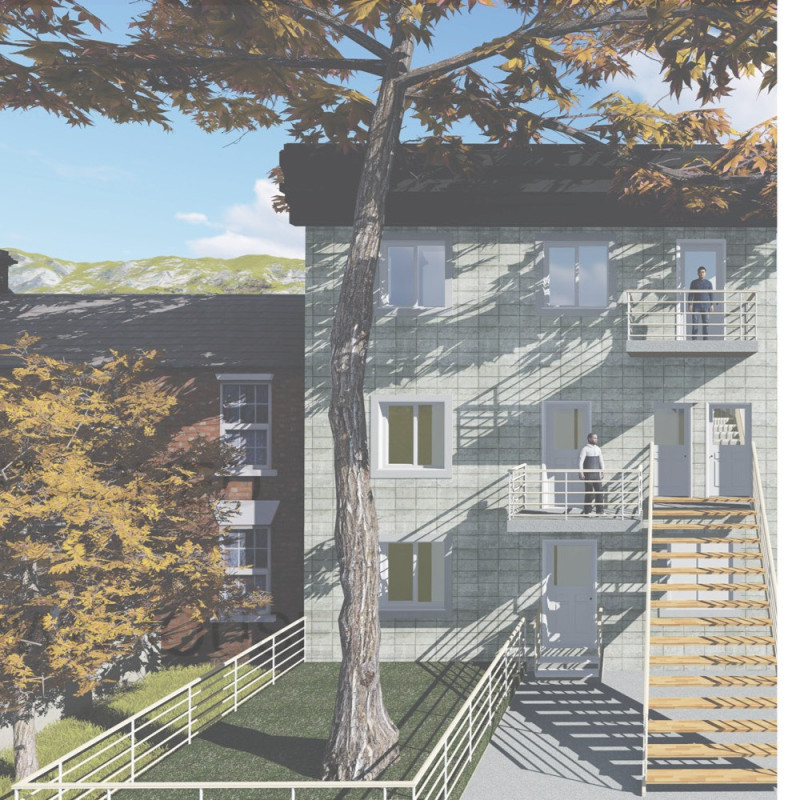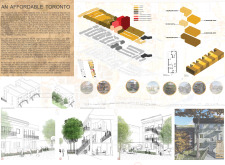5 key facts about this project
The focus is on reshaping the "Yellow Belt" in Toronto, an area mainly defined by single-family homes. The proposed changes to zoning laws aim to allow for the construction of four-storey walk-up apartments. This plan intends to create a more diverse and community-focused urban environment.
Concept and Design Intent
The concept emphasizes increasing density in existing neighborhoods. By taking inspiration from Montreal's classic three-story walk-up buildings, the plan tackles the urgent need for "missing middle housing" in Toronto’s growing suburbs. This design type offers a variety of housing options that suit the smaller living spaces preferred by modern families and young professionals.
Housing Diversity and Accessibility
The design strategy aims to blend different types of housing, including duplexes, triplexes, and secondary suites. This mixture enhances social interactions and provides affordable options for under-housed middle- and lower-income residents. The aim is to create a vibrant community that makes efficient use of available land while offering various living arrangements.
Connectivity and Urban Integration
Accessibility is crucial, especially given the current transit challenges in the "Yellow Belt." The proposal focuses on promoting walking and cycling as main forms of transportation. It includes connections to commercial areas and nearby parks. Paths of greenery will improve pedestrian movement and act as buffers between homes and the rest of the city.
Spatial Quality and Community Engagement
The design fosters a close relationship between public and private areas. By incorporating semi-public and semi-private spaces, it encourages community involvement and builds a sense of belonging among residents. Careful attention is given to how these spaces work together, providing a better urban experience. A thoughtful distribution of homes and shared areas supports a more connected and livable neighborhood.
The outcome is a layout that connects residential life with the wider urban environment, creating welcoming spaces that invite interaction and collaboration among residents.



















































